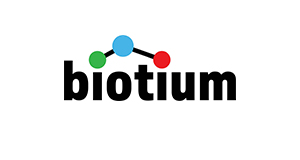Emerin (Papillary Thyroid Carcinoma and EDMD Marker) (EMD/2167), 0.2mg/mL
Emerin (Papillary Thyroid Carcinoma and EDMD Marker) (EMD/2167), 0.2mg/mL
Artikelnummer
BTMBNUB2167-500
Verpackungseinheit
500 uL
Hersteller
Biotium
Verfügbarkeit:
wird geladen...
Preis wird geladen...
Description: Emerin is a member of the nuclear lamina associated protein family. It is ubiquitously expressed and localized to the nuclear membrane in normal cells. Mutations of the gene that encodes emerin result in the X-linked recessive disease Emery-Dreifuss muscular dystrophy (EDMD), which is characterized by slowly progressing contractures, skeletal muscle wasting and cardiomyopathy. Reportedly, lack of Emerin expression is one cause of EDMD. Emerin is involved in the association of the nuclear membrane with the lamina, and is localized specifically to desmosomes and fasciae adherents in the heart. Identification of nuclear membrane irregularities with anti-emerin antibody has been reported useful in diagnosing papillary thyroid carcinoma.Primary antibodies are available purified, or with a selection of fluorescent CF® Dyes and other labels. CF® Dyes offer exceptional brightness and photostability. Note: Conjugates of blue fluorescent dyes like CF®405S and CF®405M are not recommended for detecting low abundance targets, because blue dyes have lower fluorescence and can give higher non-specific background than other dye colors.
Product Origin: Animal - Mus musculus (mouse), BSA from bovine serum (Bos taurus) or recombinant BSA produced in Chinese hamster ovary cells.
Conjugate: Purified, with BSA
Concentration: 0.2 mg/mL
Storage buffer: PBS, 0.05% BSA, 0.05% azide
Clone: EMD/2167
Immunogen: Recombinant human Emerin protein fragment (around aa 56-167) (exact sequence is proprietary)
Antibody Reactivity: Emerin
Entrez Gene ID: 2010
Z-Antibody Applications: IF (verified)/IHC, FFPE (verified)/WB (verified)
Verified AB Applications: IF (verified)/IHC (FFPE) (verified)/WB (verified)
Antibody Application Notes: Higher concentration may be required for direct detection using primary antibody conjugates than for indirect detection with secondary antibody/Immunohistology (formalin): 1-2 ug/mL for 30 minutes at RT/Staining of formalin-fixed tissues requires boiling tissue sections in 10 mM citrate buffer, pH 6.0, for 10-20 minutes followed by cooling at RT for 20 minutes/Optimal dilution for a specific application should be determined by user
Product Origin: Animal - Mus musculus (mouse), BSA from bovine serum (Bos taurus) or recombinant BSA produced in Chinese hamster ovary cells.
Conjugate: Purified, with BSA
Concentration: 0.2 mg/mL
Storage buffer: PBS, 0.05% BSA, 0.05% azide
Clone: EMD/2167
Immunogen: Recombinant human Emerin protein fragment (around aa 56-167) (exact sequence is proprietary)
Antibody Reactivity: Emerin
Entrez Gene ID: 2010
Z-Antibody Applications: IF (verified)/IHC, FFPE (verified)/WB (verified)
Verified AB Applications: IF (verified)/IHC (FFPE) (verified)/WB (verified)
Antibody Application Notes: Higher concentration may be required for direct detection using primary antibody conjugates than for indirect detection with secondary antibody/Immunohistology (formalin): 1-2 ug/mL for 30 minutes at RT/Staining of formalin-fixed tissues requires boiling tissue sections in 10 mM citrate buffer, pH 6.0, for 10-20 minutes followed by cooling at RT for 20 minutes/Optimal dilution for a specific application should be determined by user
| Artikelnummer | BTMBNUB2167-500 |
|---|---|
| Hersteller | Biotium |
| Hersteller Artikelnummer | BNUB2167-500 |
| Verpackungseinheit | 500 uL |
| Mengeneinheit | STK |
| Reaktivität | Human |
| Klonalität | Monoclonal |
| Methode | Immunofluorescence, Western Blotting, Immunohistochemistry |
| Isotyp | IgG1 |
| Wirt | Mouse |
| Konjugat | Unconjugated |
| Produktinformation (PDF) | Download |
| MSDS (PDF) | Download |

 English
English







